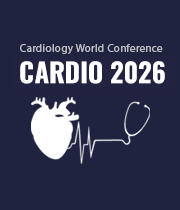Title : Correlation of homocysteine levels with lipid profile and coronary artery disease in patients with chronic kidney disease under hemodialysis - Preliminary findings
Abstract:
Background and Aims: Patients with end-stage chronic kidney disease (ESRD) exhibit disturbances in protein and amino acid metabolism and elevated homocysteine levels. The latter has been implicated as an independent risk factor for cardiovascular events in these patients. The aim of the present study is to correlate homocysteine levels with lipid profile and cardiovascular events in patients with ERSD.
Methods: 50 patients with ERSD on hemodialysis for > 6 months, 30 men (60%) and 20 women (40%) with a mean age 67.6 years ± 13.21 were included. The main underlying diseases were hypertensive nephrosclerosis (30%) and diabetic nephropathy (22%). Patients were divided into two groups according to the presence or absence of coronary artery disease (CAD) and based on receiving or not hypolipidemic treatment and folic acid. Serum homocysteine levels were correlated with normal laboratory values, total cholesterol, triglycerides, HDL and LDL cholesterol levels.
Results: Homocysteine levels were found elevated in 78% of patients. Over the course of a year, an upward trend of homocysteine levels was observed regarding normal values (1st measurement: 21.8%, 2nd measurement: 26.6%, 3rd measurement: 29.6%). Men appeared to have higher homocysteine levels than women, but the difference was not statistically significant (p=0.17). Homocysteine levels were found to be elevated in patients without CAD compared to those with CAD (p=0.04). A positive correlation between homocysteine levels and total cholesterol (p=0.01) and LDL (p=0.007) was observed in both CAD and non-CAD patients. In addition, homocysteine levels in patients receiving hypolipidemic treatment were higher than in patients not receiving it (p=0.04). There was no statistically significant difference in homocysteine levels between patients receiving or not receiving folic acid (p=0.94).
Conclusions: Homocysteine levels were found to be elevated in a high percentage of patients but surprisingly there was no statistically significant equivalence with CAD while the correlation with cholesterol and LDL cholesterol levels was statistically significant in both groups. Our findings are contradictory based on classical knowledge, and due to the fact that are preliminary with a relatively small number of patients, further study is necessary in order to confirm our findings.



